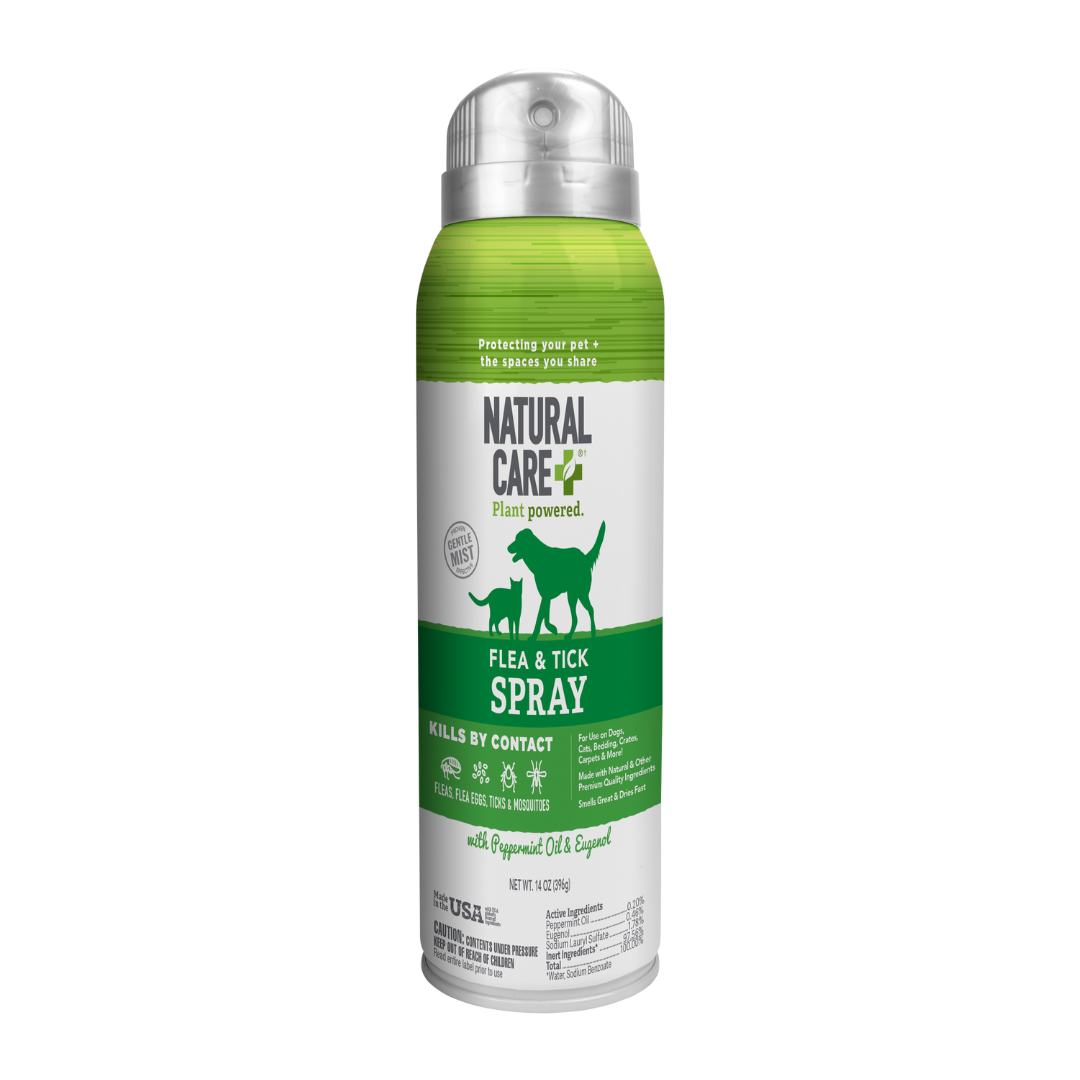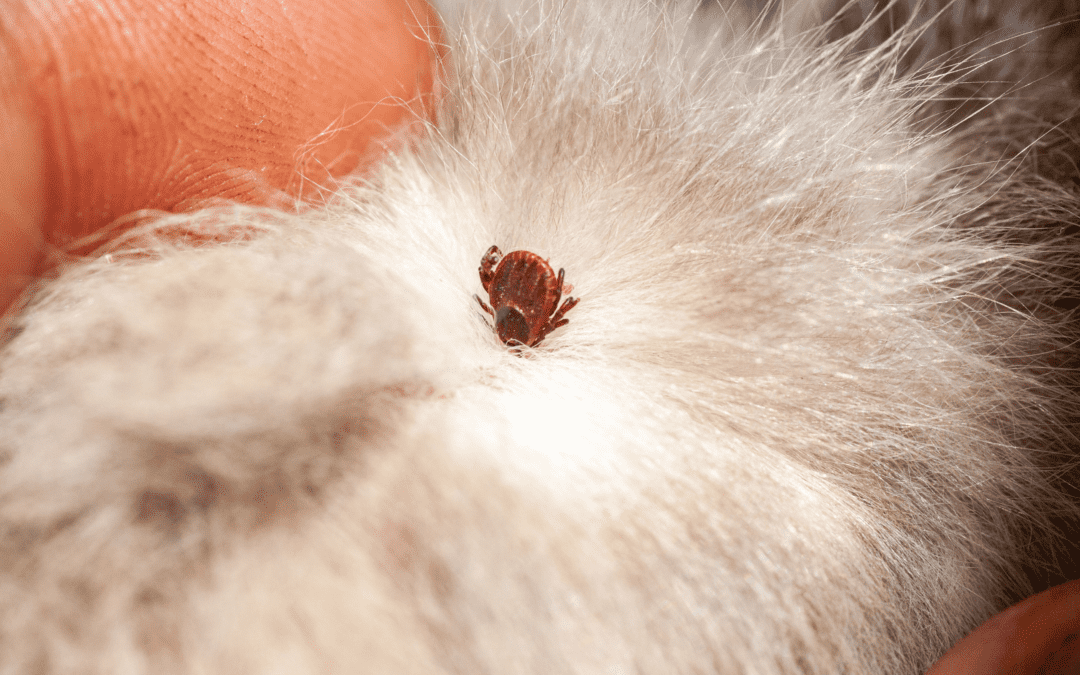As a pet owner, it can be overwhelming to choose the right flea and tick prevention for your furry friend. With so many options available, it can be difficult to know which one is the most effective and safest for your pet. However, choosing the right flea and tick prevention is crucial in protecting your pet from these pesky parasites.
In this article, we will discuss everything you need to know about flea and tick prevention and how to choose the best one for your pet. From understanding the different types of prevention methods to considering your pet's needs and lifestyle, this guide will help you make an informed decision and keep your pet safe from fleas and ticks.
Understanding Fleas and Ticks

Before we dive into the various prevention methods, it's essential to understand what fleas and ticks are and how they can harm your pet. Fleas and ticks are parasites that feed on the blood of mammals, including cats, dogs, and even humans. They attach themselves to the host's body and can cause discomfort, irritation, and even transmit diseases.
Fleas are small, wingless insects that can jump onto your pet's fur and bite them, causing itching, scratching, and hair loss. On the other hand, ticks are larger arachnids that can attach themselves to your pet's skin and feed on their blood. They can also transmit serious diseases such as Lyme disease, Rocky Mountain spotted fever, and Ehrlichiosis.
Now that you understand how harmful these parasites can be to your pet, let's look at the different methods of flea and tick prevention.
Types of Flea and Tick Prevention

-
-
Topical Treatments
Topical treatments are medications applied directly onto your pet's skin to prevent and control flea and tick infestations. They are typically available in liquid or spot-on form and are applied between your pet's shoulder blades to prevent ingestion through licking.
Could you please rephrase your question for clarity? Do they work?Topical treatments contain active ingredients that kill fleas and ticks on contact and provide residual effects, protecting your pet for weeks after application. The medication is absorbed into your pet's skin and spreads through their body, killing any parasites that come in contact with them.Advantages of topical treatments- Easy to apply
- Long-lasting protection
- Water-resistant
- Kills both adult and immature stages of fleas and ticks
Disadvantages of topical treatments- May cause skin irritation in some pets
- Some pets may have adverse reactions to the medication
- Can be toxic if ingested by your pet
- Can leave a greasy residue on your pet's fur
-
Oral Medications
What are oral medications?
Oral medications are pills or tablets ingested by your pet to prevent and control fleas and ticks. These medications circulate through your pet's bloodstream, killing parasites that feed on their blood.
How do they work?Oral medications contain active ingredients that are absorbed into your pet's bloodstream and spread throughout their body. When a flea or tick bites your pet, they ingest the medication and die.Advantages of oral medications- Easy to administer
- No messy application
- No risk of toxicity from external exposure to the medication
- Can be used in combination with other prevention methods
Disadvantages of oral medications- May not kill all parasites on contact
- Some pets may have trouble swallowing pills
- Not suitable for pets with certain health conditions
- Some medications may have side effects such as vomiting and diarrhea
-
Collars
What are flea and tick collars?
Flea and tick collars are worn around your pet's neck and release active ingredients that repel and kill fleas and ticks.
How do they work?Most flea and tick collars contain insecticides that are released by friction or when the collar comes in contact with your pet's skin. The active ingredients then spread through their fur, killing any parasites that come in contact with them.Advantages of flea and tick collars- Long-lasting protection (some collars can last up to 8 months)
- Water-resistant
- Can be used in combination with other prevention methods
- No messy application
Disadvantages of flea and tick collars- May cause skin irritation in some pets
- Not suitable for pets with certain health conditions
- Some collars may have a strong odor
- Can be hazardous if ingested by your pet
-
Shampoos and Sprays
What are flea and tick shampoos and sprays?
Flea and tick shampoos and sprays are products designed to kill and repel parasites from your pet's fur during bath time.
How do they work?These products contain active ingredients that kill fleas and ticks on contact. They are usually left on your pet's fur for a few minutes before rinsing off, allowing the medication to work its magic.Advantages of flea and tick shampoos and sprays- Effective at killing parasites on contact
- Can provide immediate relief for pets with severe infestations
- May have moisturizing and soothing properties for your pet's skin
- Can be used in combination with other prevention methods
Disadvantages of flea and tick shampoos and sprays- May not provide long-lasting protection
- Can be time-consuming (especially for larger pets)
- Some shampoos and sprays may have a strong odor
- Pets may lick off the product, making it less effective
-
Natural Remedies
What are natural remedies?
Natural remedies involve the use of essential oils, herbs, or other natural ingredients to repel and kill fleas and ticks.
How do they work?These remedies function by emitting potent odors that repel parasites or by directly killing them. Some popular natural remedies include citrus oils, neem oil, and diatomaceous earth.Advantages of natural remedies- Chemical-free
- Safe for pets with allergies or sensitivities
- Can be used in combination with other prevention methods
- May have additional health benefits for your pet's skin and coat
Disadvantages of natural remedies- May not provide as effective protection as conventional methods
- Can be time-consuming to make and apply
- Some ingredients may be toxic if ingested by your pet
- Not regulated by the FDA, so effectiveness can vary
1. Topical Treatments
Topical treatments refer to medications administered directly onto your pet's skin to prevent and control flea and tick infestations. Typically available in liquid or spot-on form, these treatments are applied between your pet's shoulder blades, making it challenging for them to ingest the medication through licking.
Topical treatments contain active ingredients that kill fleas and ticks on contact. They can also have residual effects, meaning they continue to protect your pet for weeks after application. The medication is absorbed into your pet's skin and spreads through their body, killing any parasites that come in contact with them.
Advantages of topical treatments:
- Easy to apply
- Long-lasting protection
- Water-resistant
- Kills both adult and immature stages of fleas and ticks
Disadvantages of topical treatments:
- May cause skin irritation in some pets
- Some pets may have adverse reactions to the medication
- Can be toxic if ingested by your pet
- Can leave a greasy residue on your pet's fur
2. Oral Medications
Oral medications are pills or tablets that are ingested by your pet to prevent and control fleas and ticks. These medications work by circulating through your pet's bloodstream, killing any parasites that feed on their blood.
Oral medications contain active ingredients that are absorbed into your pet's bloodstream and spread throughout their body. When a flea or tick bites your pet, they ingest the medication and die.
Advantages of oral medications:
- Easy to administer
- No messy application
- No risk of toxicity from external exposure to the medication
- Can be used in combination with other prevention methods
Disadvantages of oral medications:
- May not kill all parasites on contact
- Some pets may have trouble swallowing pills
- Not suitable for pets with certain health conditions
- Some medications may have side effects such as vomiting and diarrhea
3. Collars
Flea and tick collars are worn around your pet's neck and release active ingredients that repel and kill fleas and ticks.
Most flea and tick collars contain insecticides that are released by friction or when the collar comes in contact with your pet's skin. The active ingredients then spread through their fur, killing any parasites that come in contact with them.
Advantages of flea and tick collars:
- Long-lasting protection (some collars can last up to 8 months)
- Water-resistant
- Can be used in combination with other prevention methods
- No messy application
Disadvantages of flea and tick collars:
- May cause skin irritation in some pets
- Not suitable for pets with certain health conditions
- Some collars may have a strong odor
- Can be hazardous if ingested by your pet
4. Shampoos and Sprays
Flea and tick shampoos and sprays are products specifically designed to kill and repel parasites from your pet's fur during bath time.
These products contain active ingredients that kill fleas and ticks on contact. They are usually left on your pet's fur for a few minutes before rinsing off, allowing the medication to work its magic.
Advantages of flea and tick shampoos and sprays:
- Effective at killing parasites on contact
- Can provide immediate relief for pets with severe infestations
- May have moisturizing and soothing properties for your pet's skin
- Can be used in combination with other prevention methods
Disadvantages of flea and tick shampoos and sprays:
- May not provide long-lasting protection
- Can be time-consuming (especially for larger pets)
- Some shampoos and sprays may have a strong odor
- Pets may lick off the product, making it less effective
5. Natural Remedies
Natural remedies involve the use of essential oils, herbs, or other natural ingredients to repel and kill fleas and ticks.
These remedies function by emitting potent odors that repel parasites or by directly killing them. Some popular natural remedies include citrus oils, neem oil, and diatomaceous earth.
Advantages of natural remedies:
- Chemical-free
- Safe for pets with allergies or sensitivities
- Can be used in combination with other prevention methods
- May have additional health benefits for your pet's skin and coat
Disadvantages of natural remedies:
- May not provide as effective protection as conventional methods
- Can be time-consuming to make and apply
- Some ingredients may be toxic if ingested by your pet
- Not regulated by the FDA, so effectiveness can vary
-
Choosing the Right Prevention Method for Your Pet

Now that you understand the different types of flea and tick prevention methods, how do you know which one is the best for your pet? Here are some factors to consider when choosing the right prevention method:
- Your pet's lifestyle
- Does your pet spend most of their time indoors or outdoors?
- Do they frequently come into contact with other animals?
- Are they prone to rolling around in grassy areas?
- Are they sensitive to insecticides or other chemicals?
- Your pet's age and health
- Is your pet a senior or a puppy/kitten?
- Do they have any underlying health conditions?
- Are they pregnant or nursing?
- Have they had adverse reactions to medications before?
- The severity of the flea and tick infestation
- Does your pet already have a severe infestation?
- Have you noticed any fleas or ticks on your pet or in your home?
- Are you looking for prevention or treatment of an existing infestation?
- Potential side effects
- Are you concerned about exposing your pet to chemicals?
- Do you want a non-toxic solution?
- Are you willing to deal with potential side effects if it means better protection for your pet?
Considering these factors can help you narrow down your options and choose the most suitable prevention method for your pet.
Frequently Asked Questions

1. How often should I apply flea and tick prevention to my pet?
Most preventative products recommend monthly application, but some may provide longer-lasting protection. Be sure to read the instructions and follow the recommended application frequency to ensure your pet stays protected.
2. Can my pet still get fleas and ticks even with prevention?
While prevention methods are highly effective, there is still a chance that your pet may pick up fleas and ticks from their environment. Regularly checking your pet's fur for parasites and using additional prevention methods (such as flea and tick collars) can help decrease this risk.
3. Can I use the same prevention method for both my cat and dog?
No, it's essential to use prevention methods specifically designed for your pet's species. For example, dog flea and tick medication may be toxic to cats. Always read the label and consult with your veterinarian before using any product on your pet.
4. Can I stop using flea and tick prevention during the winter months?
While fleas and ticks are more active during warmer months, they can still survive in colder temperatures. It's crucial to continue using prevention methods year-round to keep your pet protected.
5. Will my pet have any adverse reactions to flea and tick prevention?
Some pets may experience mild side effects such as skin irritation or upset stomach when first starting a new prevention method. If your pet has any severe reactions, stop using the product and consult with your veterinarian.
Conclusion

Choosing the right flea and tick prevention for your pet requires careful consideration of various factors. By understanding the different types of prevention methods and taking into account your pet's needs and lifestyle, you can make an informed decision and keep your furry friend safe from these harmful parasites. Remember to always read the label and consult with your veterinarian if you have any concerns about using a particular product on your pet. With the right prevention method, you can ensure your pet stays happy and healthy, free from fleas and ticks.



